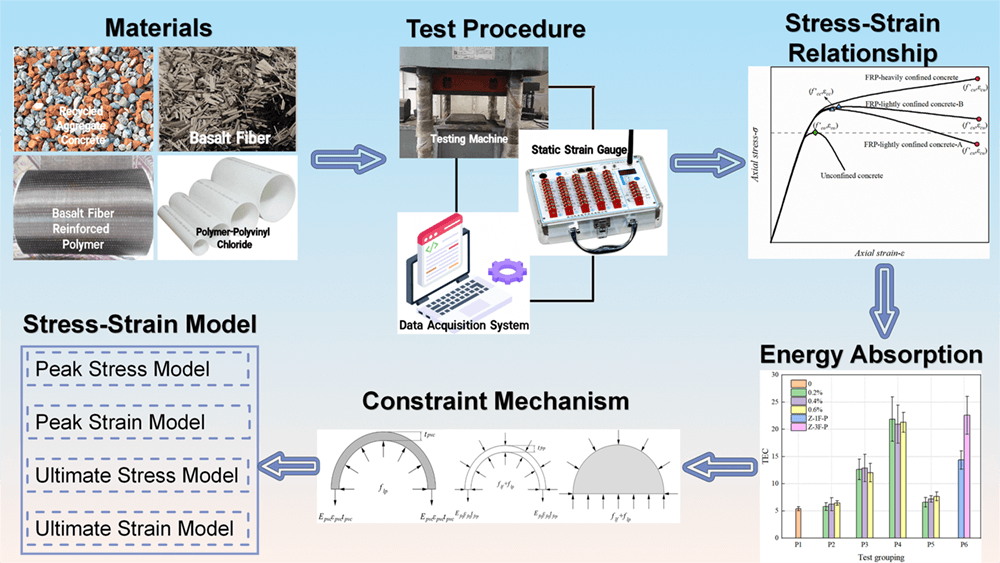 Open Access
Open Access
ARTICLE
Compressive Performance of Fiber Reinforced Recycled Aggregate Concrete by Basalt Fiber Reinforced Polymer-Polyvinyl Chloride Composite Jackets
1 Civil Engineering & Architecture College, Liaoning University of Technology, Jinzhou, 121001, China
2 School of Civil Engineering & Architecture, Ningbo Tech University, Ningbo, 315100, China
* Corresponding Author: Genjin Liu. Email:
(This article belongs to the Special Issue: Natural Fibre Composites: Design, Materials Selection and Fabrication)
Journal of Renewable Materials 2023, 11(4), 1763-1791. https://doi.org/10.32604/jrm.2023.024319
Received 31 May 2022; Accepted 09 August 2022; Issue published 01 December 2022
Abstract
The development of recycled aggregate concrete (RAC) provides a new approach to limiting the waste of natural resources. In the present study, the mechanical properties and deformability of RACs were improved by adding basalt fibers (BFs) and using external restraints, such as a fiber-reinforced polymer (FRP) jacket or a PVC pipe. Samples were tested under axial compression. The results showed that RAC (50% replacement of aggregate) containing 0.2% BFs had the best mechanical properties. Using either BFs or PVC reinforcement had a slight effect on the loadbearing capacity and mode of failure. With different levels of BFs, the compressive strengths of the specimens reinforced with 1-layer and 3-layer basalt fiber reinforced polymer (BFRP) increased by 6.7%–10.5% and 16.5%–23.7%, respectively, and the ultimate strains increased by 48.5%–80.7% and 97.1%–141.1%, respectively. The peak stress of the 3-layer BFRP-PVC increased by 42.2%, and the ultimate strain improved by 131.3%, relative to the control. This reinforcement combined the high tensile strength of BFRP, which improved the post-peak behavior, and PVC, which enhanced the structural durability. In addition, to investigate the influence of the various constraints on compressive behavior, the stress-strain response was analyzed. Based on the analysis of experimental results, a peak stress-strain model and an amended ultimate stress-strain model were proposed. The models were verified as well; the result showed that the predictions from calculations are generally consistent with the experimental data (error within 10%). The results of this study provide a theoretical basis and reference for future applications of fiber-reinforced recycled concrete.Graphic Abstract

Keywords
Cite This Article
 Copyright © 2023 The Author(s). Published by Tech Science Press.
Copyright © 2023 The Author(s). Published by Tech Science Press.This work is licensed under a Creative Commons Attribution 4.0 International License , which permits unrestricted use, distribution, and reproduction in any medium, provided the original work is properly cited.


 Submit a Paper
Submit a Paper Propose a Special lssue
Propose a Special lssue View Full Text
View Full Text Download PDF
Download PDF Downloads
Downloads
 Citation Tools
Citation Tools